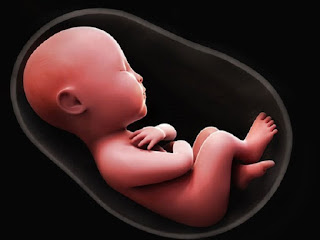" THE EARTHQUAKE OF HUMAN BRAIN"- SEIZURES & EPILEPSY EXPLAINED.! BY DR. VANDANA PATEL (PT)
Last week, I completed “Seizure recognition and first aid certification training” from Epilepsy foundation, USA. Being in to physical therapy profession and working as academician I have come across questions from my students regarding Seizure & Epilepsy. Majority of beginners will face the problem differentiating between Seizure and Epilepsy. Most of them consider it similar to each other and use the terms alternatively. Here with this blog I would like to put forward few important points regarding Seizure & Epilepsy.
Let’s begin with it...!!!
Epilepsy is more than seizures!
Epilepsy is recognized a health priority worldwide. It is termed as “Seizure disorders”. Epilepsy is the spectrum condition with multiple types of seizures and control which varies person to person.
Seizure is a sudden surge of electrical activity in the brain. It is like a short circuit that happens in your electric appliances same way this is a temporary / sudden short circuit in the brain.
International league against epilepsy revised the definition of Epilepsy. It states that ‘Seizures and epilepsy are not the same. A seizure is a transient occurrence which takes place due to abnormal excessive or synchronous neuronal activity in the brain. Epilepsy is a disease characterized by an enduring predisposition to generate epileptic seizures and by the neurobiological, cognitive, psychological, and social consequences of this condition.
“A seizure is an event and epilepsy is the disease involving recurrent unprovoked seizures.”
A Person is diagnosed as having epilepsy if they meet any of these following criterias:
1. At least two unprovoked (or reflex) seizures occurring greater than 24 hours apart.
2. One unprovoked (or reflex) seizure and a probability of further seizures similar to the general recurrence risk (at least 60%) after two unprovoked seizures, occurring over the next 10 years.
3. Diagnosis of an epilepsy syndrome: Epilepsy is considered to be resolved for individuals who had an age-dependent epilepsy syndrome but are now past the applicable age or those who have remained seizure-free for the last 10 years, with no seizure medicines for the last 5 years.
Signs/symptoms:
- No two seizures can be similar. Some seizures may be visible and easy to separate from each other.
- An aura (warning) is the first symptom of a seizure. Not everyone shows the phase of aura.
- The middle phase of seizure is called as ictal phase.
- The phase following the period of seizure; where the person recovers from seizure, is called as post ictal phase.
Types of seizures:
Seizures are generally described in two major groups: generalized seizures and focal seizures.
1. Simple partial seizure:
A seizure that starts in one area of the brain and the person remains alert and able to interact is called a focal onset aware seizure. These seizures are brief, lasting seconds to less than 2 minutes.
2. Focal to Bilateral Tonic-clonic Seizures (secondarily generalized seizures):
A seizure that starts in one area of the brain; then spreads to both sides of the brain as a tonic-clonic seizure is called a focal to bilateral tonic-clonic seizure. They usually last 1 to 3 minutes, but it may take a longer for a person to recover.
3. Absence seizure (Petit mal seizure):
Absence seizures cause lapses in awareness, sometimes with staring. They are a type of generalized onset seizures, meaning they begin in both sides of the brain at the same time. This lasts for only few seconds.
4. Atypical absence seizure: In this type of seizures the person will stare and will be able to respond.
5. Tonic clonic seizures: A tonic-clonic seizure usually begins on both sides of the brain, but can start in one side and spread to the whole brain. This type of seizure last for 1 -3 minutes and person might take longer to recover.
6. Atonic seizures: Person looses muscle tone which makes his head to limp. Children might show sudden head drop.
7. Myo-clonic seizure: It is brief shock like jerks of muscle or muscle groups.
Moreover, there are some more epilepsy syndromes which shows feature of seizures.
Accurate diagnosis for Epilepsy is must and it can be treated as a team approach.
For primary first aid of seizures kindly follow my page at instagram with id @tinyyears_physicaltherapy➡️➡️➡️
💥💥💥💥💥💥
Reference:
Epilepsy foundation







Very informative. How can I reach out to you to know some details about MPT at Manipal University?
ReplyDeletePlease DM me on instagram tinyyears_physicaltherapy. Thanks.
DeleteInformative and easy to understand
ReplyDelete